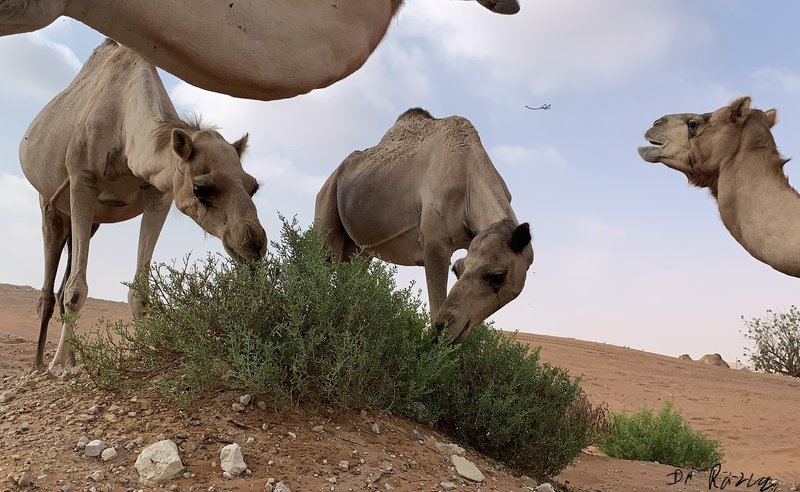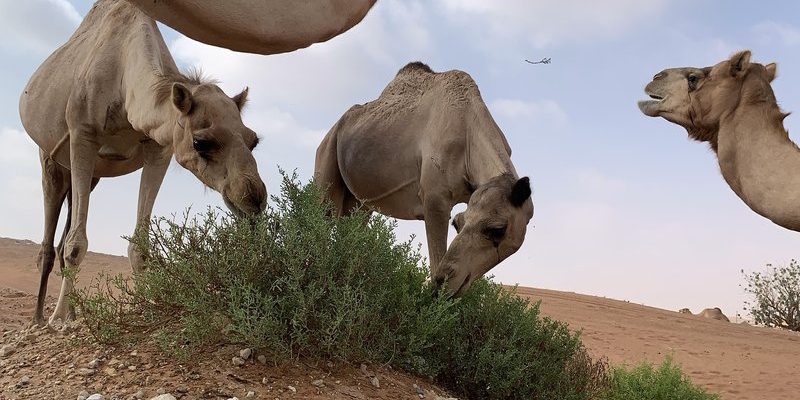
Let’s dive into their fascinating world. With their unique adaptations, camels aren’t just surviving; they’re thriving and influencing their surroundings in ways that are pretty amazing. Whether you’re curious about their effects on vegetation or how they support other wildlife, there’s so much to learn about these remarkable animals. So grab a cup of coffee, and let’s explore the incredible role camels play in their ecosystems.
Understanding the Habitat of Camels
Camels are primarily found in arid regions like deserts, where the climate can be harsh. But what makes these environments so special? Desert ecosystems are characterized by low rainfall, extreme temperatures, and unique plant life, all of which influence the animals that live there. Camels are perfectly designed to thrive in this challenging habitat.
Their bodies are built to withstand heat, conserve water, and navigate sandy landscapes. They can drink a large amount of water at once and can go for weeks without drinking again. This ability is essential not only for their survival but also for the health of the ecosystem. By efficiently using water, camels help maintain moisture levels in their environment.
Camels as Seed Dispersers
You might be wondering how a creature that roams deserts contributes to plant life. Well, camels are natural seed dispersers. When they munch on desert vegetation, they don’t just feast on the leaves; they also consume seeds. As they wander, these seeds pass through their digestive systems, getting a free ride to new locations.
This process is crucial for the growth of new plants. When camels poop, they leave behind seeds that can sprout in different areas. This not only helps plants spread but also promotes genetic diversity. More diverse plant life means a healthier ecosystem, providing food and shelter for a wide range of animals. It’s like giving nature a little nudge to grow and thrive.
The Nutritional Contributions of Camels
Camels are not picky eaters—they’ll munch on just about anything from thorny bushes to dry grasses. This diverse diet plays a big role in their ecosystems. By grazing on various plants, camels help control vegetation growth. If they didn’t, some plants might overtake the landscape, leaving little room for others.
By keeping plant growth in check, camels allow for a variety of vegetation types to flourish. This is important because different plants provide habitats for other species. For example, insects may thrive in thicker grasses, attracting birds that rely on those insects for food. So, camels are indirectly supporting a whole food web just by doing what they do best—eating!
Supporting Other Wildlife
Camels aren’t just lone wanderers; they interact with other wildlife in fascinating ways. For instance, their presence creates opportunities for smaller animals and birds. When camels graze, they stir up the ground, unearthing insects and other food sources. This attracts scavengers and opportunistic feeders to the area.
Additionally, the shade provided by camels during the hottest parts of the day offers a cooling spot for other animals looking to escape the sun. Imagine small creatures gathering beneath a camel, finding relief from the heat while sharing the same space. It’s a perfect example of how one species can enhance the survival of many others.
Camels and Soil Health
The role of camels goes beyond just what they eat; they also impact the soil. As they move through their environment, camels can help aerate the soil. You might not think of a camel’s footsteps as significant, but when they walk across soft, sandy ground, they create small disturbances. This action helps with soil fertility.
Moreover, camel droppings are rich in nutrients. As the poop decomposes, it enriches the soil, improving its structure and fertility. This process helps other plants grow better, ensuring the ecosystem remains vibrant and full of life. So next time you see a camel, remember that they’re not just wandering—they’re also helping cultivate the earth beneath their feet.
The Camel’s Adaptations
Camels have some incredible adaptations that make them suited for their tough environments. Their thick fur and unique body structure help regulate body temperature. At night, when temperatures drop, their body heat is retained, keeping them cozy. And during the day, they can let heat escape through their skin.
Another fascinating feature is their feet. Camels have wide, padded feet that prevent them from sinking into the sand. It’s like having built-in snowshoes! This allows them to travel long distances in search of food and water without exhausting themselves. These adaptations not only help camels survive but also allow them to fulfill their ecological roles effectively.
The Cultural Significance of Camels
Beyond their ecological impacts, camels also hold cultural importance in many regions. For centuries, they’ve been companions to humans, serving as beasts of burden, transportation, and sources of milk and meat. In communities where resources are scarce, camels are invaluable.
This deep connection between camels and people showcases the interdependence of humans and nature. By understanding and respecting these creatures, we help protect the delicate balance of their ecosystems. So, when you think of camels, consider them not just as animals but as part of a larger story that includes us too.
In conclusion, camels play a multifaceted role in their ecosystems, from seed dispersers to soil enhancers. Their contributions are significant in maintaining the health of their environments. Remember, every time a camel lumbers through the desert, it’s not just surviving; it’s shaping the very world around it. Understanding this relationship helps us appreciate these remarkable creatures even more. So, next time you hear about camels, think of them as crucial players in a larger ecological dance, all working together to sustain life in arid landscapes.

